On Thanksgiving Day, I dropped by Hive to say “Hi” to a few old friends. To my surprise, Hive was trading at $1.69 and Twitter had exploded with Hive-adoration as everyone started breaking out their best bottles of bravado and braggadocio. As an ex-hedge fund manager, skepticism is my middle name, so I decided to do a little digging to see if this momentous breakout seemed justified.
Following is the comment-reply thread from my interaction with @cryptogee, one of those aforementioned friends:
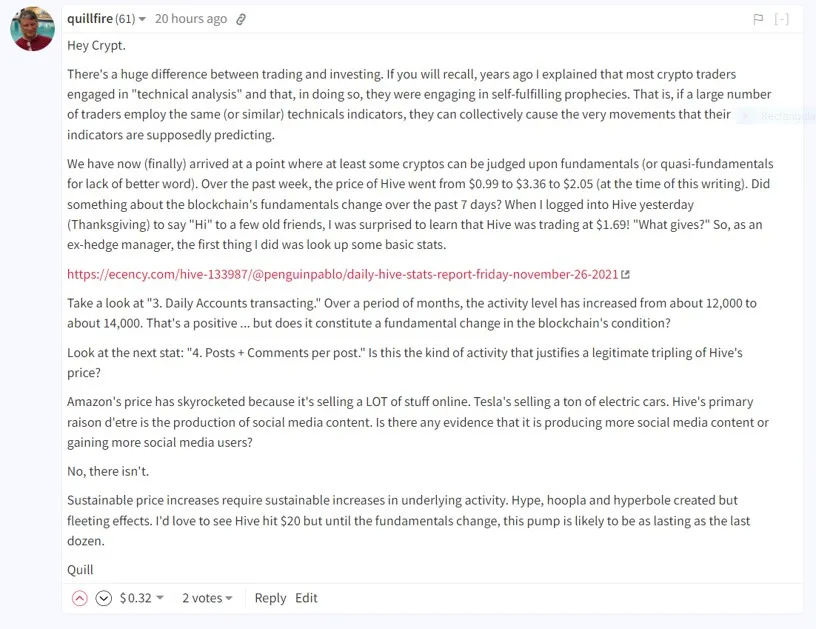
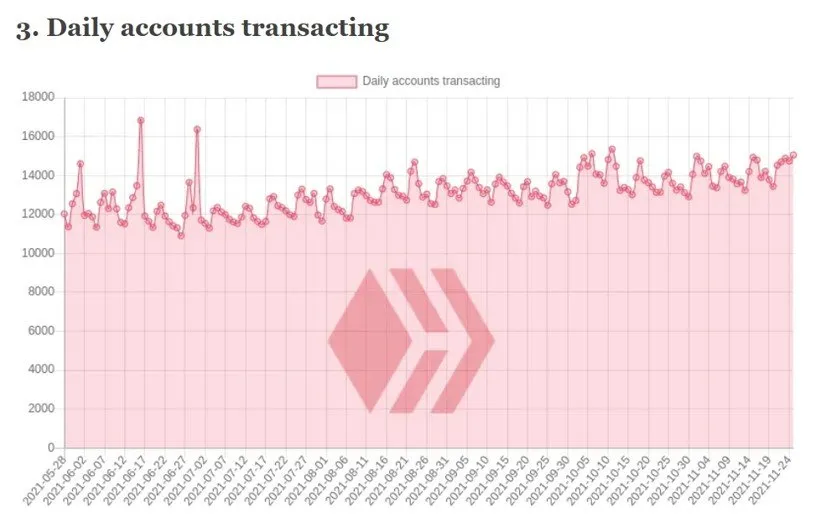
Image: @penguinpablo/daily-hive-stats-report-friday-november-26-2021
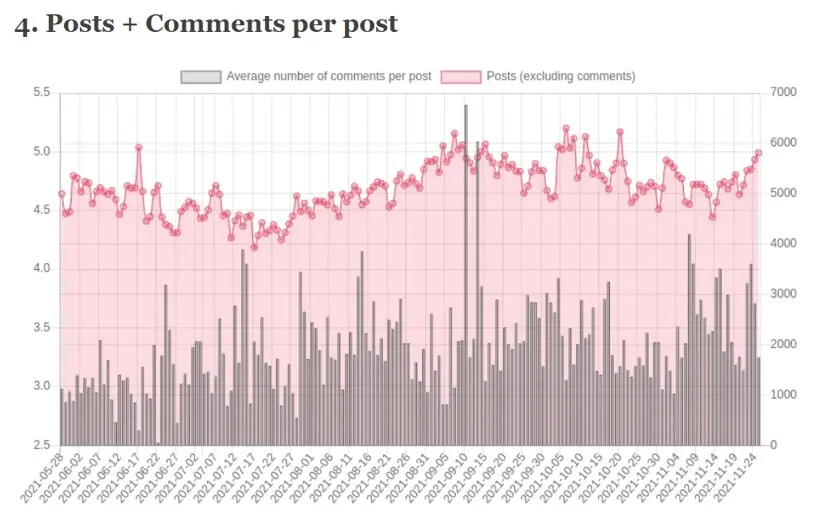
Image: @penguinpablo/daily-hive-stats-report-friday-november-26-2021
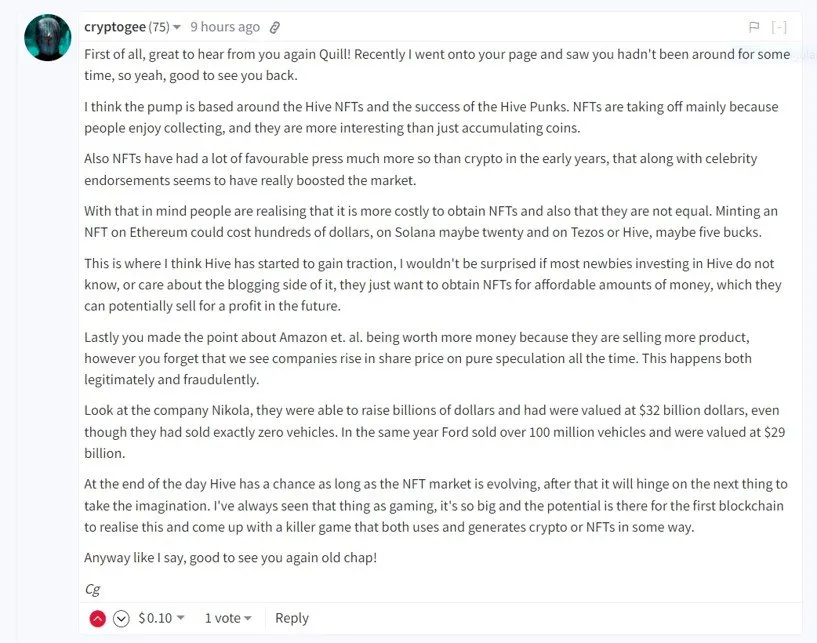
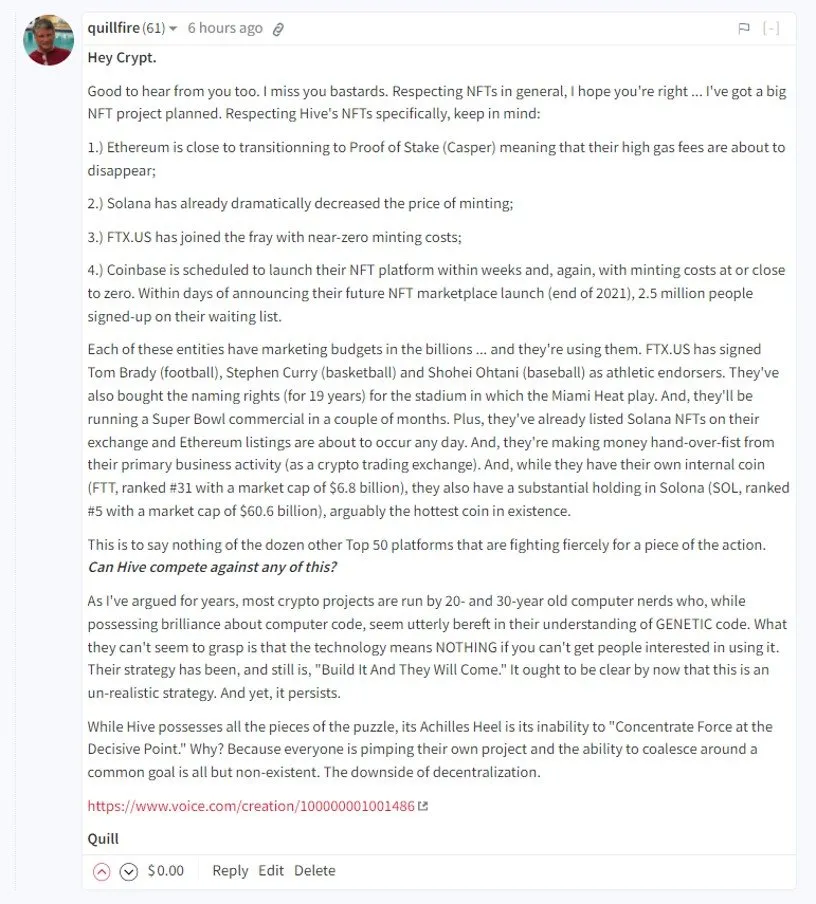
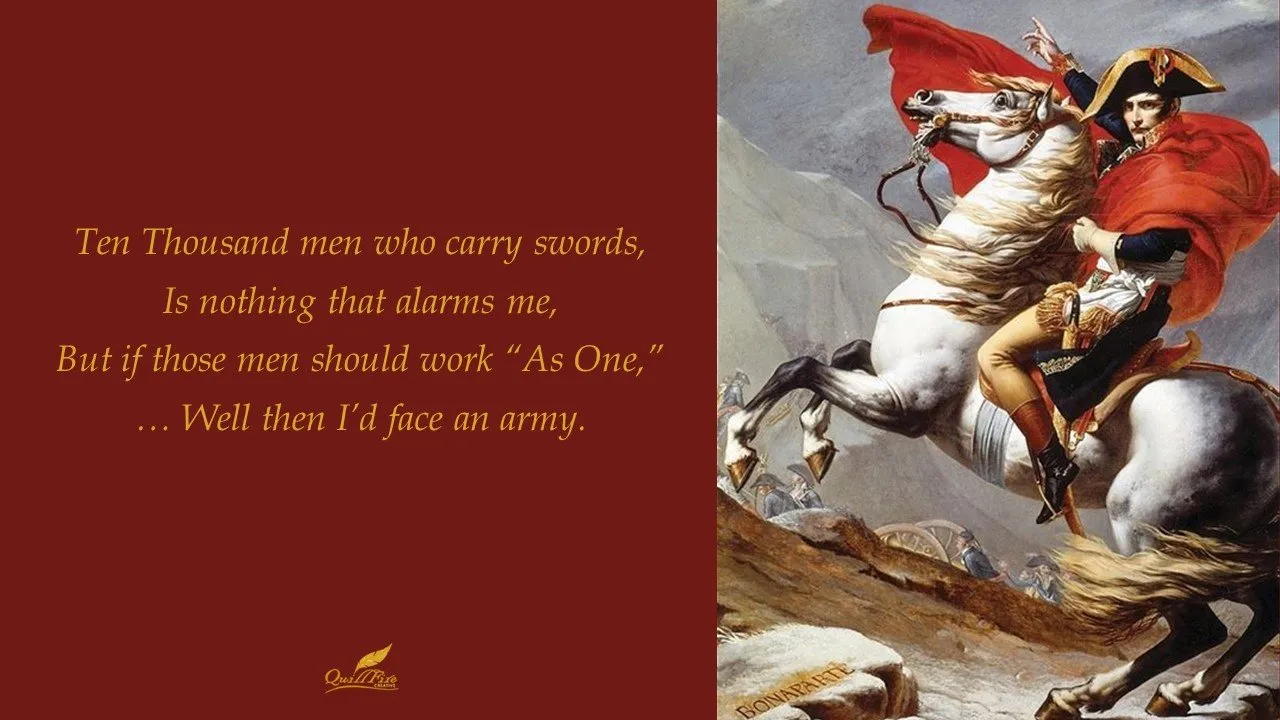
.
I should have known better than to drop in on Cryptogee. Somehow that bugger always manages to trigger a thought process requiring a long-winded response.
Situational Awareness
Blockchains do not exist in a vacuum. If it takes a particular blockchain a year to accomplish what others accomplish in a month, the world shrugs and moves on without it. And that's what happened to Hive. Despite this recent price pump, Hive still only has 14,000 Active Daily Users and is not even ranked in the Top 100 cryptocurrencies by market cap.
Acknowledging the realities of one's circumstances is, as they say in the military, "situational awareness." Pretending there are ten guys on the other side of the hill does nothing to negate the existence of a hundred. Irrespective of explanations or excuses, Hive is no longer even a near-peer of its competitors.
So, given this recognition of reality, what ought the blockchain do?
Form an Alliance
Throughout human history, most states (and city-states) were pawns in "The Great Game" of "The Great Powers" of their day. Lacking the ability to mount an independent defense, the less powerful formed alliances with one of the then-contemporary Great Powers. In ancient Greece, for example, there were, at one time, more than 1,500 polises (roughly, "city-states"), almost all of which either allied with Athens or Sparta. NATO in relation to the U.S. would be a contemporary military example, while the European Union in relation to Germany, a civilian one.
For any alliance to work, however, it must be beneficial to all parties concerned and hence the less powerful must bring something to the partnership that is valued by The Great Power with which it seeks to ally.
NFTs are the Great Game & the Great Powers are Forming
In the CryptoSphere, NFTs have become "The Great Game" and the likes of FTX.US, Coinbase and Crypto.com are rapidly becoming "The Great Powers" (mega-NFT marketplaces). The logic is simple: Given their gargantuan capital resources and infrastructure specifically designed for trading, they set sail in aircraft carriers while others set sail in canoes. Undoubtedly, there will be an army of challengers -- but not many that are credible. Concentrated capital is a fiercesome weapon in the hands of an adversary and as The Great Powers become entrenched, venture capitalists, and investors generally, will become more reluctant to fund competing endeavors. This is a dynamic that many in the CryptoSphere don't seem to see ... and I've frequently wondered if such visual impairment is the result of willful blindness. To many, anything that's not DECENTRALIZED is, a priori, bad.
Any financial exchange is a meeting place for:
a.) People trying to sell things; and
b.) People willing (and able) to buy that which is for sale.
Such dynamic strongly favors the creation of a small number of CENTRALIZED exchanges where everyone congregates so that buyers and sellers can easily find one another. This is why, in the real world, there are only a small number of stock, bond and derivatives exchanges, or for that matter, art auction houses. And, we can see this same dynamic already occurring in the CryptoSphere -- while there are innumerable DEXs (decentralized exchanges) scattered about, their volumes pale in comparison to that of the centralized exchanges. Throw in regulatory compliance, institutional market makers, institutional investors, greater liquidity (tighter bid-ask spreads), lower fees, etc. ... and the writing is on the wall. This same dynamic, I'd proffer, will be fundamental to the formation of NFT marketplaces.
What Does Hive Bring to the Table?
Hive's capital resources are too small to be of interest to anyone. And, its technology is nothing that any of The Great Powers don't already possess, or that which could not be obtained, quite easily, elsewhere.
So, what's left?
1. Curation
Hive possesses 14,000 crypto diehards willing to do almost anything to see their blockchain succeed. At first glance, this may not seem like much, but it could address a problem for which none of The Great Powers currently have a solution: curation. (And keep in mind that even at the height of its power, Sparta could only field 10,000 soldiers.)
Anyone who's spent even a few minutes scrolling through NFTs on the larger NFT exchanges cannot have failed to notice that 99% of NFTs are utter crap. Let there be a curse upon the first of the Illuminati who trots out that old saw, "quality is subjective," in the comments section. Yes, quality is subjective -- but not so subjective that anyone thinks Elvis couldn't sing ... or that I can.
The Trending pages of most NFT marketplaces are dominated by PfPs (Profile Pic art, that is to say ... cartoons). Such "art" is extremely unlikely to appeal to the "mainstream," the majority of the population without which cryptos have no future. This is not an assertion difficult to prove. Simply, spend a few minutes showing your non-crypto friends the NFTs on Trending pages ... and take note of their howls of derision.
Some NFT marketplaces have attempted to remedy the situation by hiring "professional curators." But here's the thing: typically, such so-called "art experts" are amongst the most insufferably pompous pinheads to have even walked the face of the Earth. Much like movie critics (and mimes), no one with an IQ over 2 agrees with their artistic proclamations and proclivities. To wit, here's an exposition about why paintings comprised of "white paint on white canvas" are actually worth the tens of millions of dollars that a handful of "thought leaders" paid for them. Apparently, the rest of us cave-dwelling knuckle-draggers are insufficiently sophisticated to appreciate the subtleties of the sublime.

.
2. Artist-Audience Engagement
To the best of my knowledge, only one NFT platform (other than Hive) even plans to have a comment-reply section. But, as every Hivian knows, it is the interaction between authors and their audience that creates engagement and reinforces the bonds of friendship. Moreover, an audience's applause provides "social proof" to third parties (prospective buyers) that others share their favorable impression of a creator's creation.
Hive's upvoting system also allows those without the financial resources to buy an NFT to, nevertheless, reward an artist for their efforts ... while earning curation awards in the process. Moreover, it allows artists to reciprocate by upvoting comments, rewarding those involved with the elevation of their work.
Neither Twitter nor Discord, the primary venues used for post-publishing promotion, come close to replicating this kind of intimate one-on-one engagement.
3. Promotion
At present, if Shakespeare, Da Vinci and Beethoven returned from the grave and collaborated to create an NFT -- it wouldn't earn a nickel absent an effective promotional campaign or lottery-levels of luck. Starting a fire requires both tinder and a spark and Hive is perfectly designed to deliver both.
What I'm arguing is that Hive ought not be striving to compete with The Great Powers to mint NFTs, it ought be striving to compete with Twitter for their promotion. The former is a fight Hive would be hard-pressed to win; the latter, a fight it would be hard-pressed to lose.
Years ago, when I regularly posted on Steemit, I was part of a group called the PowerHouse Creatives (PHC). @theycallmedan organized a contest in which the team that received the greatest number of votes (from Steemians at large) would receive a substantial delegation of STEEM. At the time, PHC had less than 100 members and we faced off against teams many times our size -- some representing entire countries. It was the mother of uphill battles. But we out-hustled everyone, post-promoting not just on Steemit or in Discord; but on Facebook, Twitter and Instagram as well. To be candid, we drove everyone nuts but there was no question in anyone's mind who wanted it the most. And we didn't just beg. As the name suggests, the PowerHouse Creatives were a group capable of creating great content ... and we did.
And so, we won.
Here's one of the poems I wrote for the occasion.

If one wants to catch a fish, one would be well advised to forgo fancy lures in favor of finding a hole full of fish. If Hive wants to attract mainstream users, it must cast its net in waters where they swim ... on mainstream social media sites. Getting their attention on such sites, however, will take more than chest-thumping and hullaballoo (it hasn't worked so far, has it?). "Great art" is a "shiny object" as good as any with which to bait the hook.
Word-of-Mouth is Naught but the Telling of Stories
Those of us in advertising have long advised our clients that word-of-mouth is the most effective form of advertisement. But how does one actually go about getting people to talk about one's products or services?
Word-of-mouth is naught but the telling of stories ... and the stories people like to tell possess highly predictable attributes. Just as no one wants to tell an unfunny joke, no one wants to tell a boring story. People tell stories that elicit emotional reactions in those to whom the stories are told -- and stories which make the teller seem smart, funny or intriguing in its telling.
Here's an experiment: Find a high-priced NFT depicting an ape cartoon. Now, find a non-crypto friend and try telling them a story about it. See how long you can hold your friend's attention and be sure to note their emotional state throughout. Achieving virality amongst crypto enthusiasts, I'd submit, is not the same as achieving virality amongst those who are ... sane.
Hive is perfectly configured to be the "proving ground" that separates NFTs which possess mass appeal from those likely to be little more than crypto curiosities. Moreover, by becoming the "collective curators" of NFTs minted by a Great Power, Hive would generate enormous amounts of exposure for itself in the process ... on someone else's dime.
A Hypothetical Example
Let's say, hypothetically, there is a brilliant poet and satirist named @chillsquire (who, amongst other things, is a damnably handsome man). And, let's say, he has created an NFT Collection that is actually the basis of a 9-month-long Great Power marketing campaign masquerading as a contest (one so cleverly devised that it redefines the meaning of "gamification"). To ensure that the contest attracts lots of participants and media coverage, let's also say that @chillsquire "blackmails" (in a good way) the Great Power into providing a $1,000,000 Grand Prize plus hundreds of thousands of dollars in weekly prizes.
Given the inability to communicate on The Great Power's NFT marketplace, @chillsquire would need to find a place to post the contest's rather lengthy rules. He'd also need a place to provide weekly contest clues (found on hyperlinked third-party NFTs and/or blog posts) and to disclose the prior week's winners. Lastly, he'd need a way to interact with contest participants as interaction is what drives enthusiasm and participation.
Of course, such place would also need a way for The Great Power to actively participate, to stoke interest while doling out additional daily rewards to the thousands of contest participants involved with its elevation.
A myriad of social media sites could fulfill such a role but none so well, I suspect, as Hive. Obviously, Hive could provide all the necessary communication. But it would also be able to provide an easy and efficient way for The Great Power to reward participants independent of the contest itself -- simply, buy a pile of Hive and upvote participants' comments on @chillsquire's contest posts. At the end of the contest, The Great Power could retain its stake (for use in subsequent campaigns) or liquidate and get its money back ... plus or minus the amount of Hive's price appreciation or depreciation since the time of purchase.
On that last point, Hive's price appreciation or depreciation: imagine that @chillsquire was smart enough to include in his NFT Collection a number of NFTs designed to attract other Fortune 500 companies so that once the present contest was finished, another might begin ... but with a different sponsor.
Who wins? The Great Power gets an extremely effective, yet relatively cheap, marketing campaign; Hive gets a ton of new users (the contest participants) and, quite likely, a number of new investors, both large and small; and, mainstream social media users (the contest participants) get introduced to the CryptoSphere in a manner that is fun and engaging ... and, for approximately 100 of them, very remunerative. And @chillsquire, one could only hope, gets filthy rich from the sale of his NFTs ... which seems only fitting as it was all his idea in the first place.
In Sum
You go to war with the army that you have ... but the army that you have determines the battles you can fight.
If Hive is to have a future, Hivians need to take stock of their surroundings and adapt accordingly. The CryptoSphere of tomorrow will not be the CryptoSphere of today.
.
Quill
